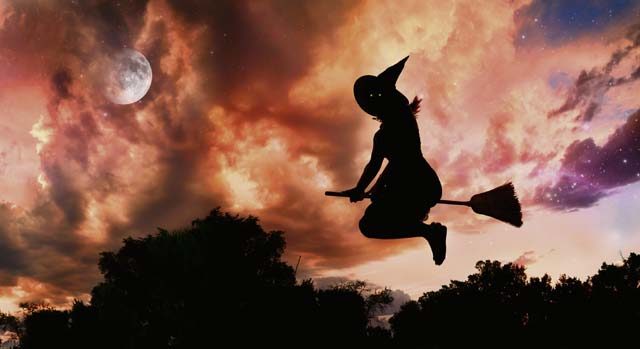
The night of April 30 in Germany marks Hexennacht, or “witches night.” In Germany it is celebrated to say good-bye to winter and welcome spring. Off-base residents may experience some funny and strange things. They must keep an eye on their homes and cars since it is custom for children and teenagers to play tricks on the neighbors. Popular tricks are the wrapping of cars with toilet paper, and the spraying of doors, windows and cars with shaving cream, mustard and ketchup. In recent years, older children and even adults started to do destructive things like removing drainage covers in the middle of the roads or on the sidewalks and removing or turning street signs. Motorists are asked to exercise caution when driving in the middle of the night or the next morning. German Polizei will patrol the neighborhoods that night.
The night from April 30 to May 1 is considered to be the night when the witches and demons held a big feast, especially on the Brocken, a hill in the Harz mountains, also known as Blocksberg.
Hexennacht, also known as Walpurgis Nacht, is an abbreviation of Saint Walpurgis Night. It is the eve of the Christian feast day of Saint Walburga, an 8th century abbess in Francia. The feast commemorates her being canonized on April 30. The daughter of a West Saxon chieftain had two brothers, Winebald and Willibald. She and her two brother studied at Wimborne Monastery in Dorset, where Walburga became a nun. She was sent to Germany to help with missionary work, in 748. After two years in Bischofsheim, she became abbess of the double monastery at Heidenheim, which was founded by her brother Winebald. After his death, the Bishop of Eichstadt who was also her brother Willibald appointed her abbess of both monasteries. Saint Walburga was known for exorcising demons from sick persons. Saint Walburga passed in 779, she was first buried at Heidenheim and on May 1, 871, she was transferred to Eichstadt to be reburried next to her brothers.
Another German tradition is to put up a May tree on either the evening of April 30th or the morning of May 1st and “Tanz in den Mai”, “Dance into May,” symbolizing the start of spring. Usually a birch tree is used and the treetop is decorated with colorful ribbons. “Tanz in den Mai” is a village fest organized and sponsored by different associations and sports clubs with live music entertainment in community halls, gasthauses, or other facilities that allow you to dance.
May 1 in Germany is a legal holiday also called Labor Day. It was on May 1st, 1890, when for the first time, workers demonstrated for better working conditions in Germany. Workers were demonstrating for an eight-hour workday and other working-class rights. However, it was not until 1919, that May 1st was proclaimed as a legal holiday. Still in this century, on May 1, trade unions and workers meet for demonstrations and political speeches.
Witches Night and May Tree fests in the KMC
Tuesday:
6 p.m. Steinwenden, Haeberle Platz, May Tree Fest
7 p.m. Mittelbrunn, Landmaschinenhalle (agricultural vehicle hall), Dance Night
7 p.m. Elschbach, city hall, Dance Night
8 p.m. Heckenrock, Witches Rock, Erfenbach
Wednesday:
9:30 a.m. Bann
10 a.m. Kindsbach
11:30 a.m. Bruchmuehlbach, Village Square


